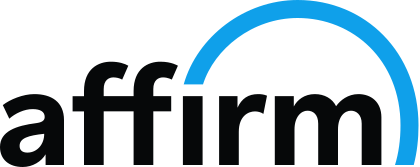 In part 1 of this post, we examined freelance to full-time career transition strategies that included showcasing freelance work that aligned with the employment goal, zeroing in on transferrable skills, experience communication, and showing client satisfaction to land the gig.
In part 1 of this post, we examined freelance to full-time career transition strategies that included showcasing freelance work that aligned with the employment goal, zeroing in on transferrable skills, experience communication, and showing client satisfaction to land the gig.
But what about after you land the new role?
You don’t want to just abandon your client base with no transition plan. Below are strategies to help negotiate a smooth transition with your freelance clients.
Open Communication and a Transition Plan
Everyone appreciates transparency, and authenticity in the business world is a valuable asset. Whether you still plan on keeping a few core clients or you plan to leave the freelance world for the benefits of a single employer, honesty about and during the career transition will help maintain the solid reputation you’ve built.
- Initiate conversations with clients well in advance: Provide clients with ample notice and offer referrals for other service providers as well as a transition plan or schedule to handover responsibilities. You can explain your reasons for the career change and express gratitude for their patronage without becoming personal.
- Clearly communicate how clients can transition smoothly without negatively impacting their projects and reassure them of your commitment to ensuring a seamless handover.
Maintaining Expectations for Continued Support and Services
Set a schedule or deadline with your freelance clients for how you will hand off responsibilities and how long you will offer ongoing support during your career transition. Maintaining and communicating about these expectations can help avoid miscommunications that might otherwise derail a previously loyal client relationship.
- Provide options for ongoing support, even after the career transition, if you choose to offer it, or discuss possibilities for future collaboration on a project-by-project basis.
- Happy clients give great referrals. Even if you don’t plan on freelancing in the future, your reputation follows you and managing your departure should be as strategic and sincere as when you began. Reiterate your dedication to the success of projects initiated during your freelance tenure and share your willingness to assist in any potential challenges that may arise, even if only on an advisory basis.
Develop a Strategic Handover Plan to Ensure a Seamless Career Transition
Creating a comprehensive package of deliverables for your client or successor will help ensure continued success of your project as well as help avoid issues or confusion after you have left. Include a hard copy as well as digital and make sure they have access to any platforms you managed for them.
- Document essential project details and create a comprehensive outline for your clients, including key information, schedules, contacts, and other pertinent and time sensitive information.
- Work with your successor, if applicable, to handover data and train or review processes, if necessary. Preparation on the front end will help avoid unnecessary communication or emergencies down the road.:
Setting Clear Expectations for Transition
Communicate how long you will be available and how the parameters of your professional relationship will change during that time. If you plan to continue over the course of weeks or months, what they can expect from you and when your availability will cease.
- Establish a timeline and clear milestones when scheduling the handover. Communicate deadlines and time-sensitive issues for completing the handover and continuing in the future.
- Anticipate potential challenges or obstacles during your career transition and offer proactive solutions to minimize disruptions.
Gratitude and Reputation – Maintaining Professionalism and Positive Relationships
Your career trajectory has already taken some turns, and its likely to do so again in the future. We can’t always anticipate where our professional journey will take us, but maintaining a positive reputation, loyal following, and placing value on client experience will ensure that you always have references and reviews that show you in your best possible light.
- Express sincere gratitude and thank clients for the opportunity to work together. Make it personal and highlight specific aspects of the collaboration that you valued.
- Express enthusiasm for potential future collaborations and leave the door open for continued professional engagement. Even if you don’t plan to work together again, they may offer referrals, references or other participation that can continue to be valuable to you throughout your career.
Handle Potential Client Concerns Proactively
You may already have clients in mind that you anticipate may not react well to your career transition. Try to address any concerns proactively and set boundaries as to how much you are willing to do to rectify any issues. Be prepared to let things go in order to move forward.
- Anticipate and address potential client concerns about the transition and prepare responses and potential solutions.
- Provide reassurances to mitigate challenge and reassure clients that their satisfaction and project success remains a priority.
Successfully transitioning from freelance work to full-time employment requires a strategic and thoughtful approach, especially when it comes to managing relationships with former clients. By maintaining clear communication, expressing gratitude for past collaborations, and offering alternative solutions for their ongoing needs, freelancers can ensure a smooth career transition while leaving a positive impression.
This not only fosters goodwill but also establishes a foundation for potential future collaborations.
Good luck on the new job!




















